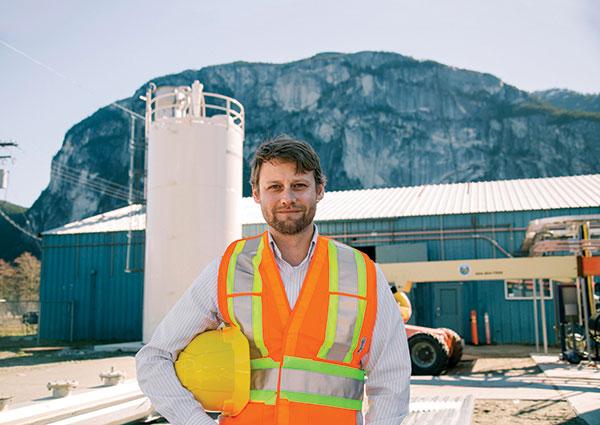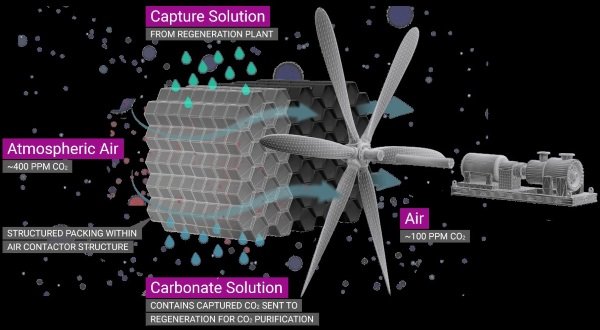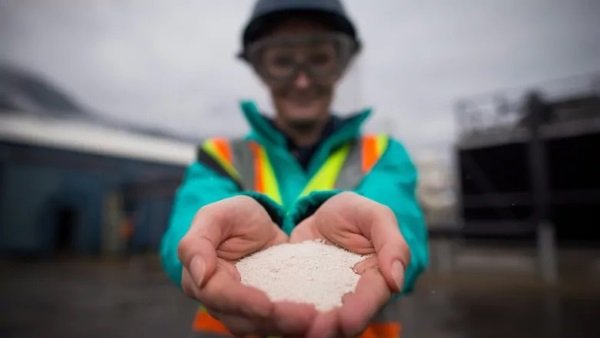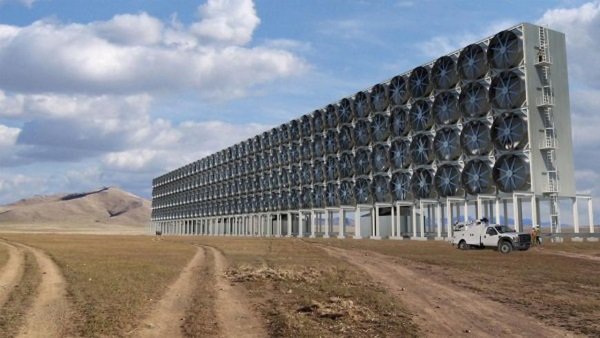
Geoff Holmes (above) is Carbon Engineering’s business development manager. “The Squamish facility is meant to test and refine the Calgary-based company’s carbon capture process,” explains Holmes. While most of the machinery is fully automated, the plant still employs 15 full-time staff. Each day the plant collects about one ton of CO₂, an amount roughly equivalent to the emissions from 100 cars. Based on the pilot plant’s success, plans are afoot to build industrial-scale operations that could be “upwards of a thousand times larger than the pilot,” according to Holmes.

A closer look at the Squamish pilot plant reveals both the simplicity and intricacy of DAC technology. Those walls of fans? They draw air into a filter system where the CO₂ (400 ppm or about 0.04% of the air) is absorbed into a liquid potassium hydroxide solution. The CO₂-infused liquid is then distilled to precipitate tiny solid pellets of calcium carbonate the size of grains of sand. The pellets are superheated to a temperature of 900°C (1650°F), at which point they emit pure carbon dioxide gas.

“It would basically be a closed circle,” sums up Holmes. “You’re capturing CO₂ from the air, turning it into fuel, the car burns it, and it goes back into the air.” As for the initial energy required to power the DAC process, a renewable energy source is ideal. It’s no coincidence, therefore, that CE chose to locate its pilot plant in British Columbia where clean hydroelectric power is available in abundance.





